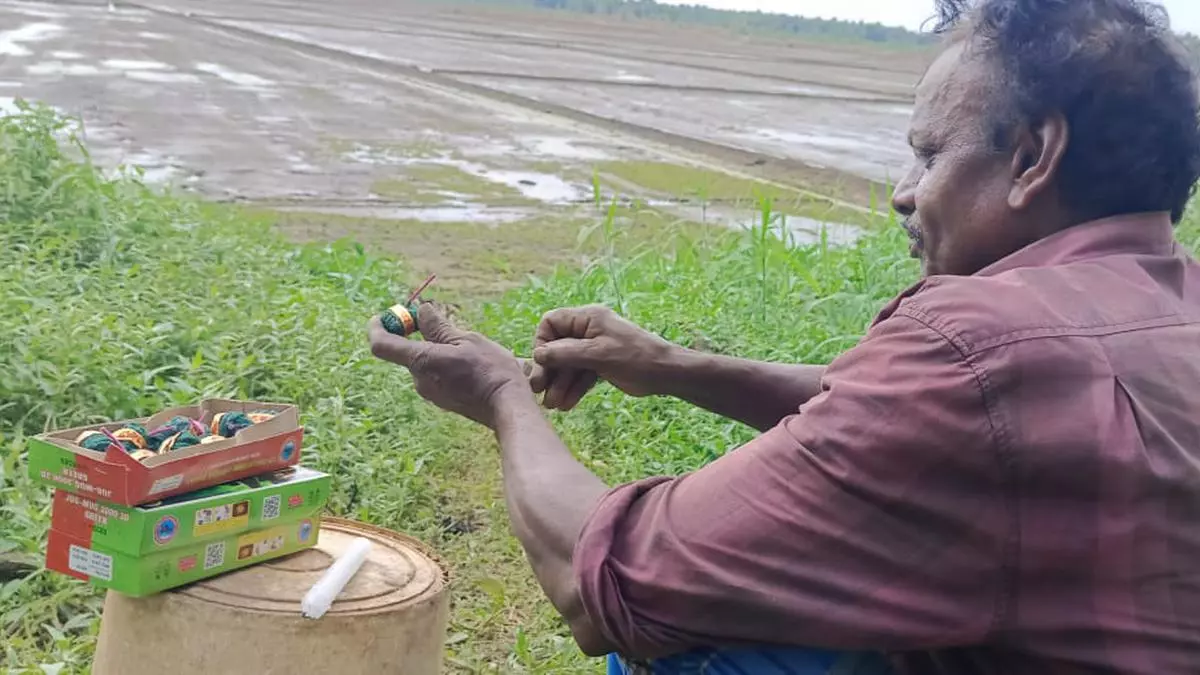How the Kole paddy field owners of Cherpu in Thrissur keep the bird menace at bay
If you think that the person in the picture is bursting crackers in a farm on Diwali, you are wrong. He is doing an interesting work and gets paid for it too.
His task is to drive away birds flocking to eat paddy seeds sown in the fields with the sound of crackers. This is now a common sight in the paddy fields of Cherpu near Thrissur district of Kerala.
These days Pazhuvil–Varriam Kole Padavu in Cherpu and the neighbouring areas, where sowing has just been completed, reverberate with bursting cracker sounds. The Kole paddy lands are a highly productive ecosystem. They are known for a rich diversity of birds, including migratory ones. But the major menace is the local pigeon, which arrive in large flocks and eat freshly sown seeds.
P.K Ibrahim, a paddy field owner, who employed migrant labour to scare away these birds, told businessline that this method has been adopted by most paddy field owners on 150 acres in the Varriam Kole land area for quite some time. They employ mostly Tamilian workers, who get a daily wage of Rs 800-900 for the job, which compares well with wages earned on any other work they do.
In addition to pigeons, cranes are also a menace in the paddy fields. Curiously, the problem persists for just 4-5 days until the seed germinates and seedlings start growing. The paddy field owners engage workers on a daily wage during this period. The cost of the crackers and their meals for the day are met by the land owner, Ibrahim said.
The idea has worked according to him. The yield last year was good at 2,300-2,500 kg of rice from one acre. With favourable weather conditions, they are anticipating a similar yield in the current season as well.
P Indira Devi , ICAR Emeritus Professor , Kerala Agricultural University (KAU), said the bird menace is common in many rice-growing areas of the State, though the bird species varies in different areas. While it is pigeons in Kole, grey-headed swamp hens (Neelakkozhi ) are the pests in Pokkali lands.
As a rule, farmers use a higher seed rate in anticipation of a loss of a certain quantity of seeds. Though KAU has prescribed some non-chemical control methods to tackle the problem, farmers often come up with such innovative approaches.
